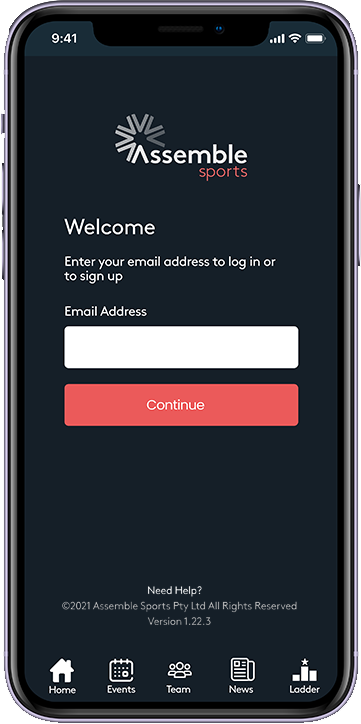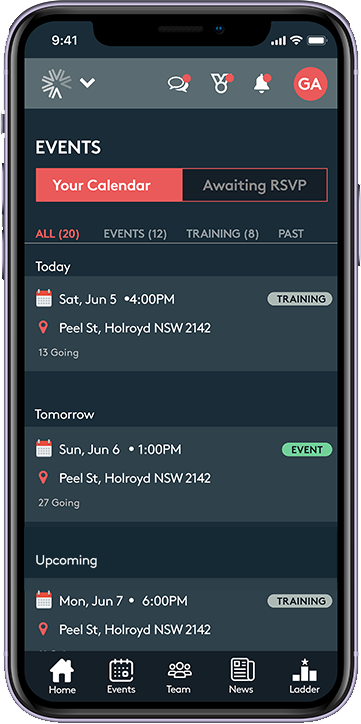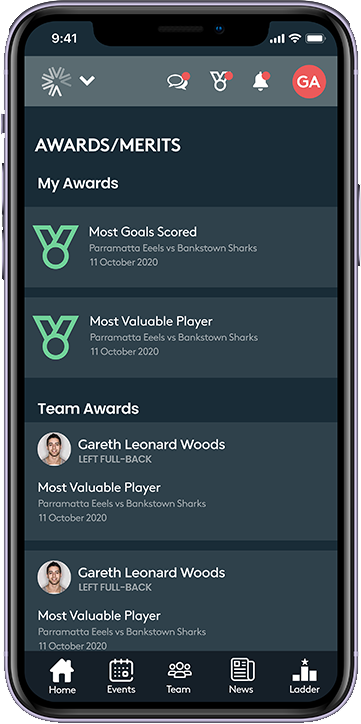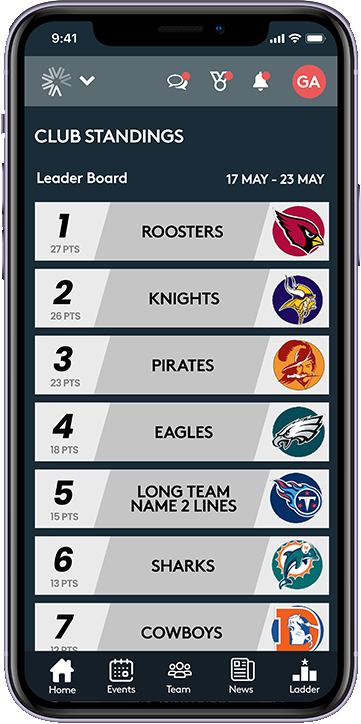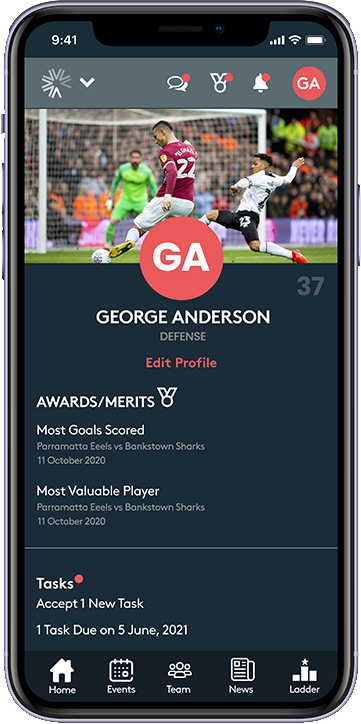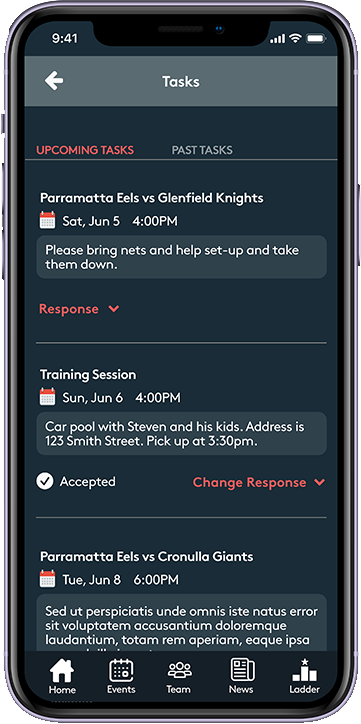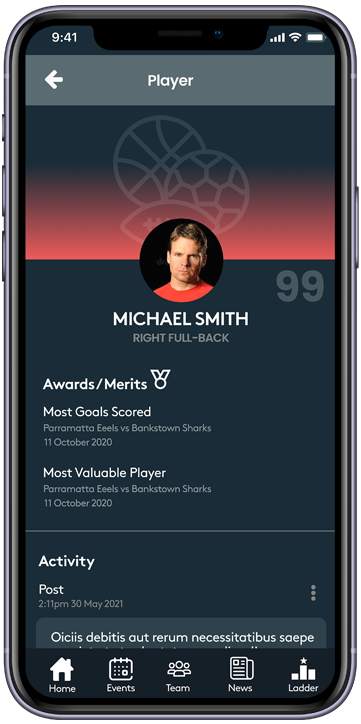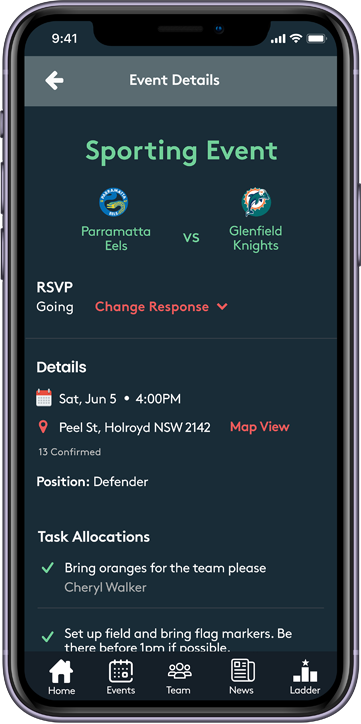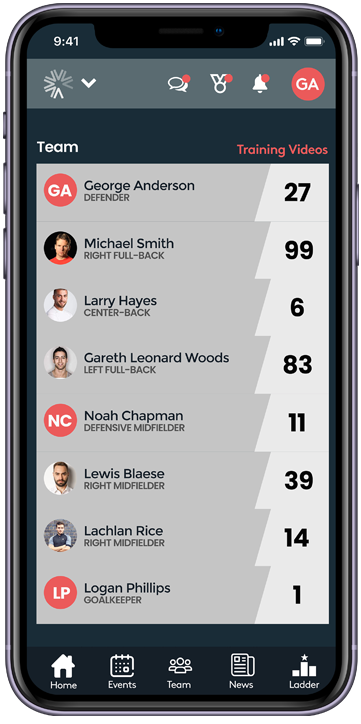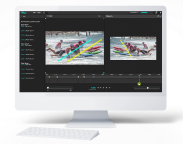ASSEMBLE SPORTS: A Case Study
Mobile Application
Provide sport clubs a consolidated application to communicate, view upcoming and past team events, display team member details, and share media.
The
Challenge
There was a need for all sporting clubs to disseminate information across many channels. For example, the club admin needs to communicate with coaches of teams, coaches of teams need to communicate with team members and parents, and team members and parents need to communicate with team mates. Currently this was being done through a number of disconnected social media applications such as Facebook and WhatsApp.
The
Outcome
An interactive mobile application prototype that now serves as the go to source for all sporting club needs and allows all personas to share media, communicate, detail upcoming and past team events, displaying team stats and member details.
Assemble Sports develops a number of frictionless products that help keep organisations, their fans and their players connect and engage; they target elite level sports to grassroots competitions. They identified that there was a need for an application that provided an holistic means for sports teams, members and fans to connect and share information and view statistics. Currently, a number of different applications were being used to communicate and share information.
I was hired to identify the core users / personas, map out the user flows and user journeys of each, and design high-fidelity interactive prototypes that would be used by engineers to develop the application and to be pitched to sporting clubs.
Share
Discovery
I began with a Discovery workshop where I looked to understand the key requirements that satisfied business and user goals, the competitor landscape, personas, and current business challenges and pain points. Key stakeholders attended and a number of card sorting exercises were engaged using Mural – a virtual application to capture workshop data.
The application needed to be designed to be handed off directly to developers to interpret and code based solely on the designs. The designs needed to be low-level enough so that there was no room for interpretation or guess-work. Empty-states, confirmation modals, error-states were all needed to be considered in the design.
The login and registration screens had to identify which user group or persona a user belonged to because the interface and permissions would be change based on what group they belonged to. For example, if the user was a fan, they would not have access to team chat rooms or details on practice routines and locales.
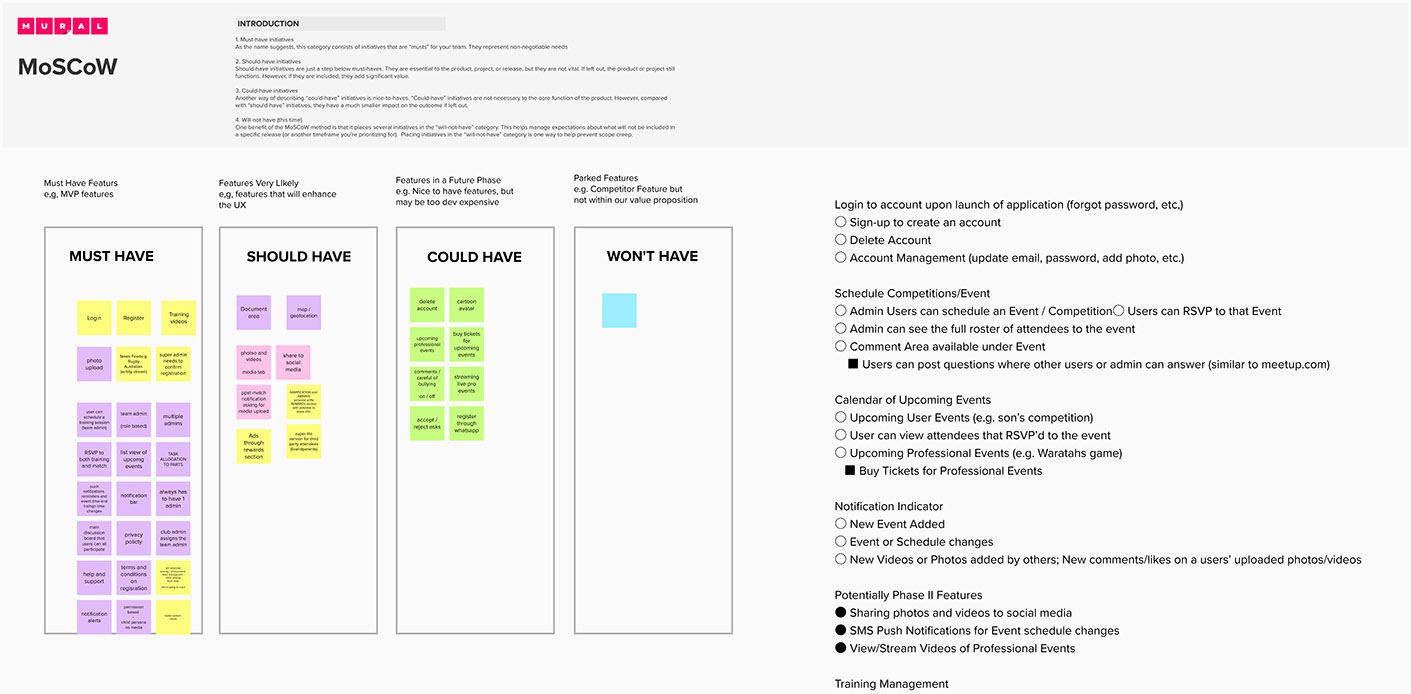
Persona Design
Two primary and two secondary personas were identified. The characteristics of the personas were detailed and these personas were used to create specific user journeys within the application. The application is geared toward general users, but the application interface and functionality needs to change slightly if it is a corporate client or ID user that has logged in.
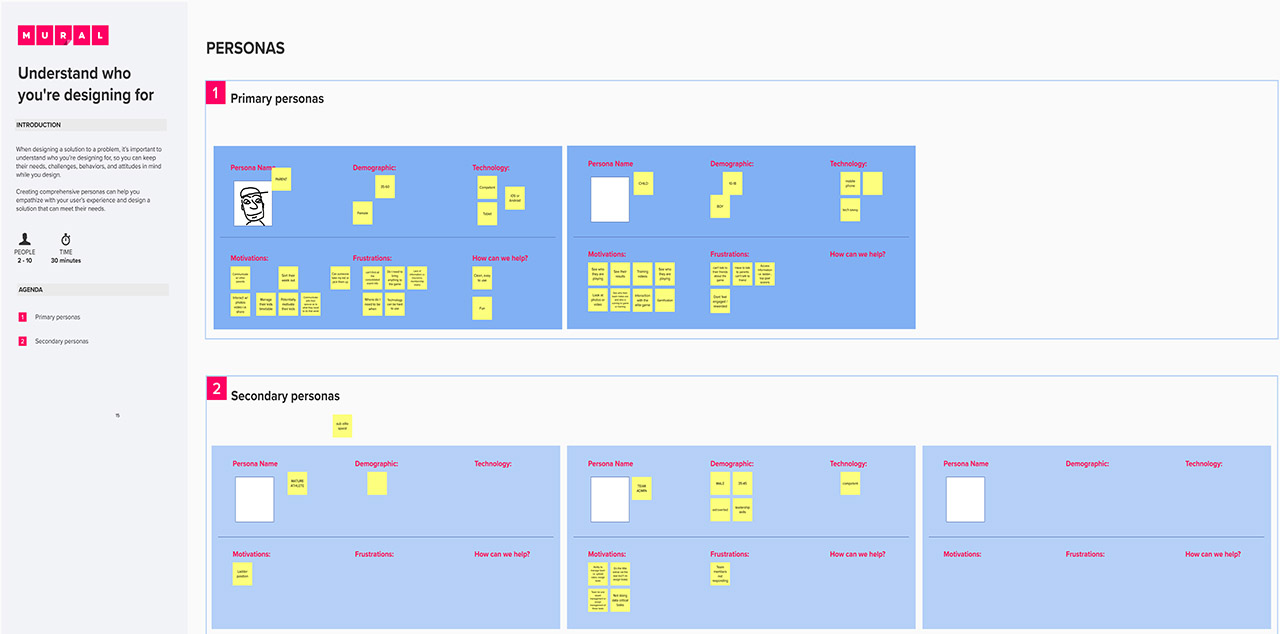
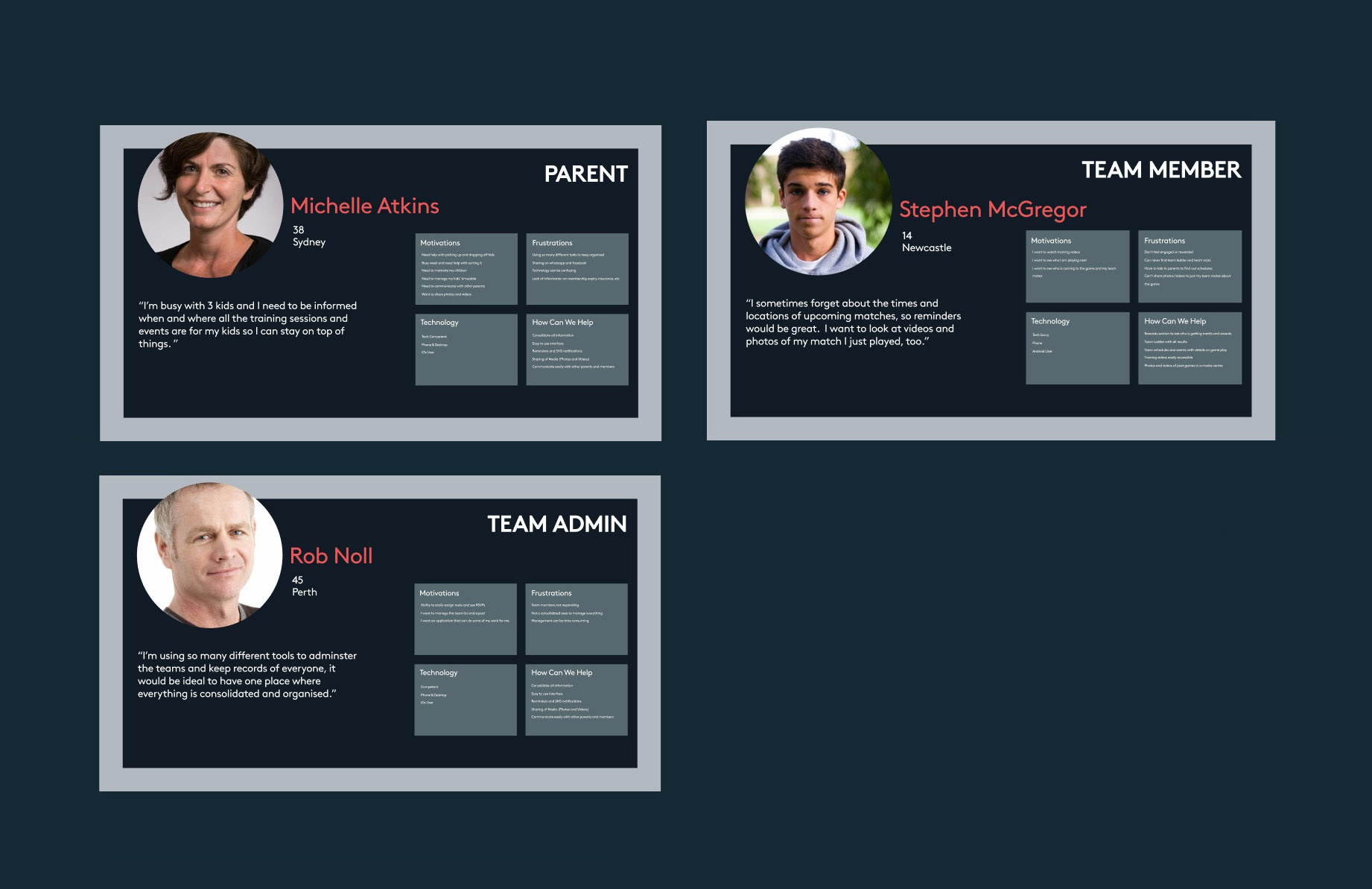
Competitor Analysis
A brief look at the strengths and weaknesses of competitors in the industry were discussed in order to understand how the application both is differentiated from the others, but also what features overlap.
The potential threats of these competitors was discussed which was vital to understand how best to scale and pivot the application if required in the future.
A full analysis was not possible due to both client time and budget constraints; however, the major players were identified and provided a strong understanding of the competition landscape.
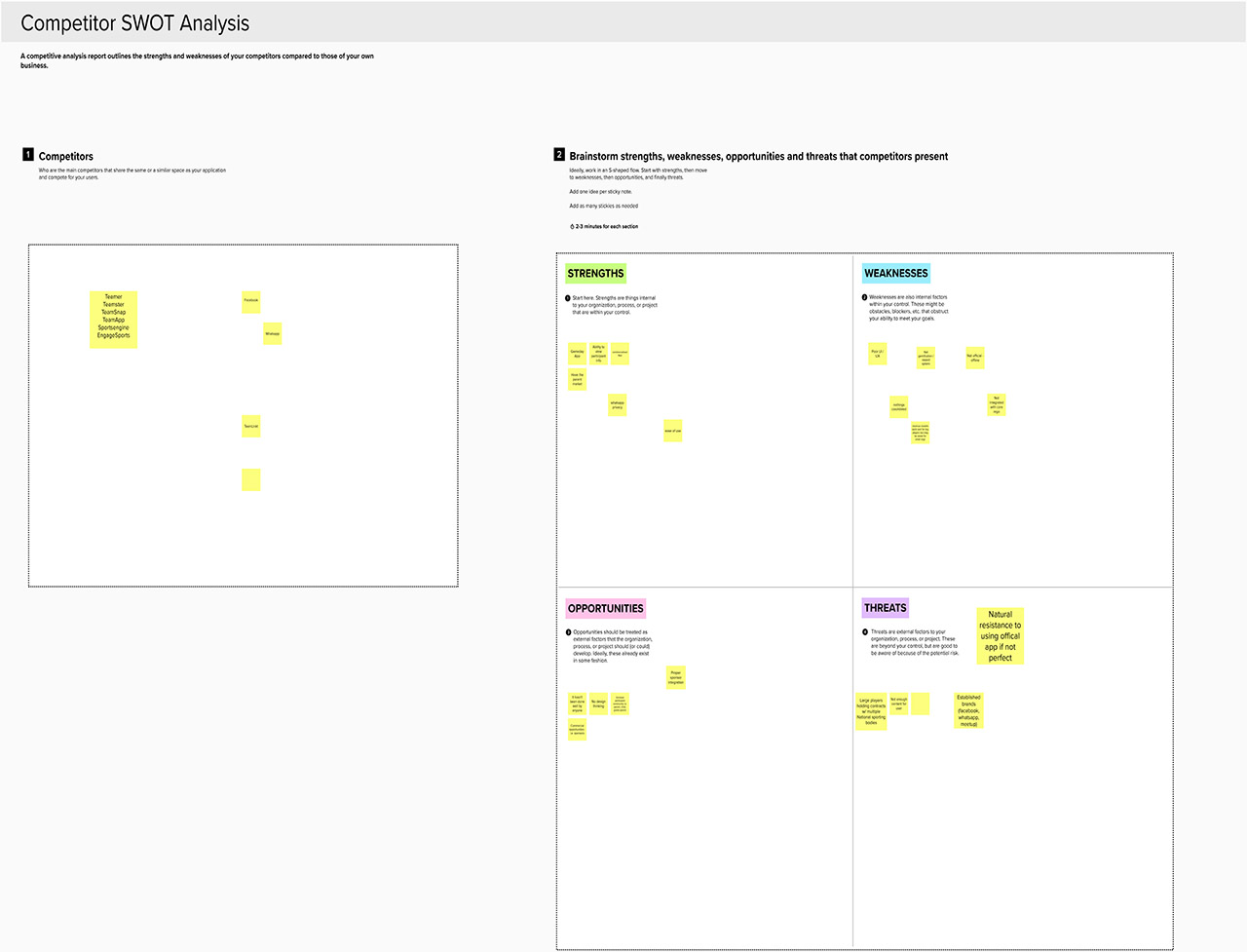
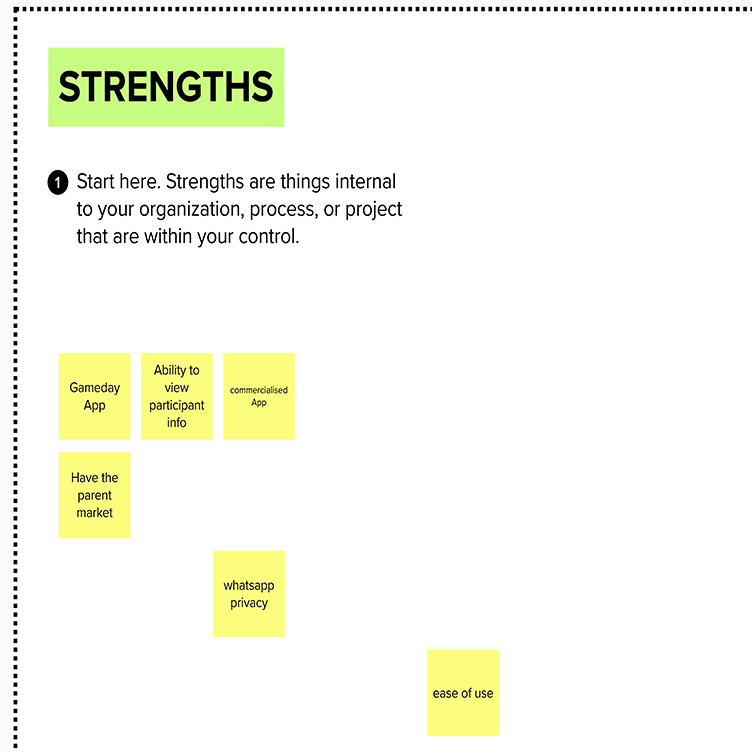
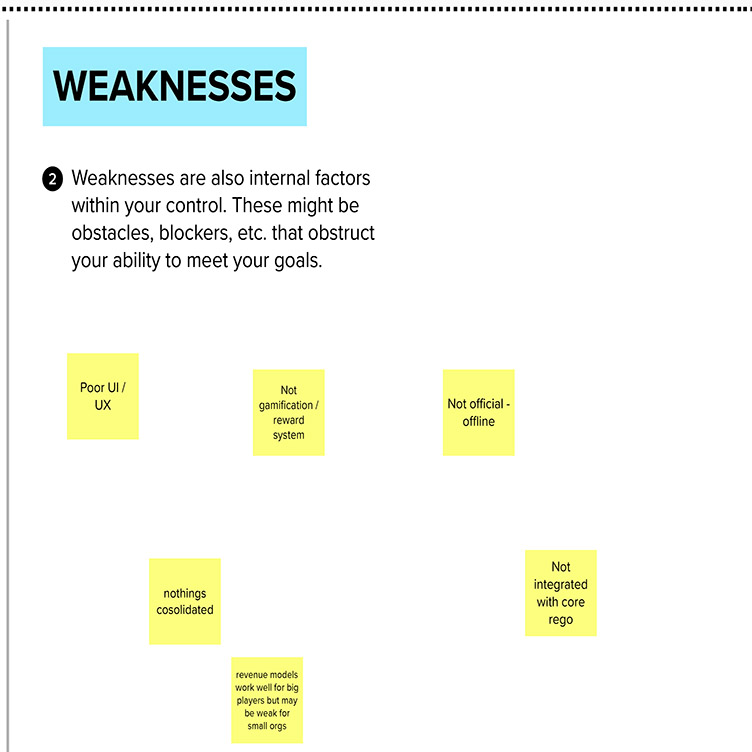
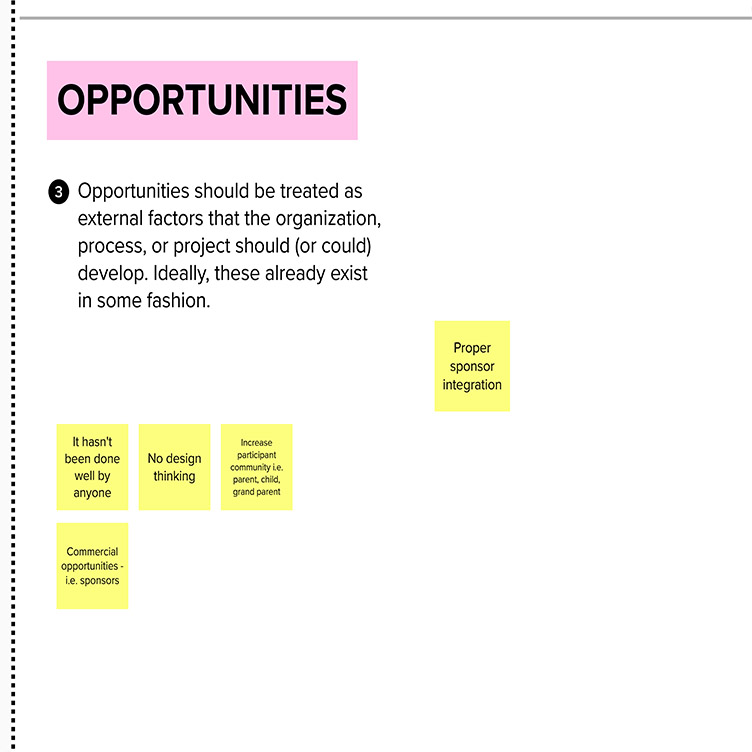
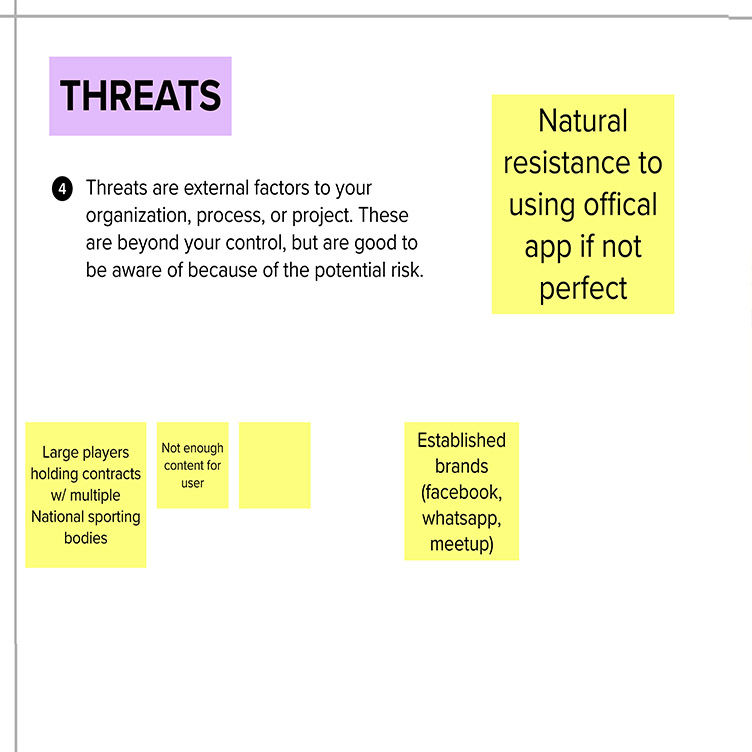
High-Fidelity Prototypes
Over 50+ Interactive Designs
Designs were done in Figma and converted to interactive prototypes. Over 50+ screens were designed in high-fidelity that satisfied business and user requirements.
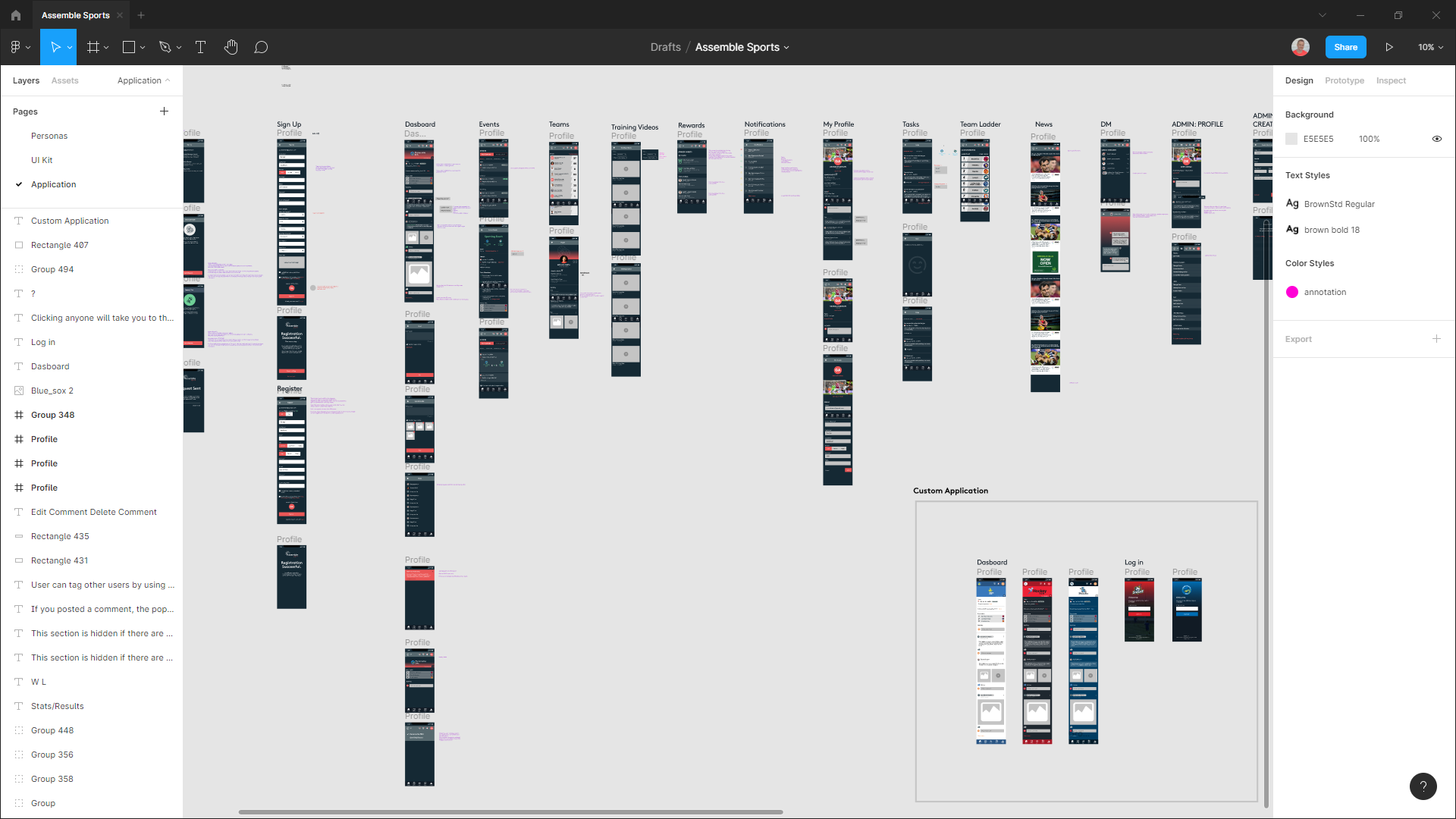
UI Kit
The branding and styles were designed from scratch. A dark skin for the application was designed in order for the templates to be better showcased against a dark background. The font chosen was rounded to match the logo style. Iconogrpahy and application components complemented the theme for a professional aesthetic.
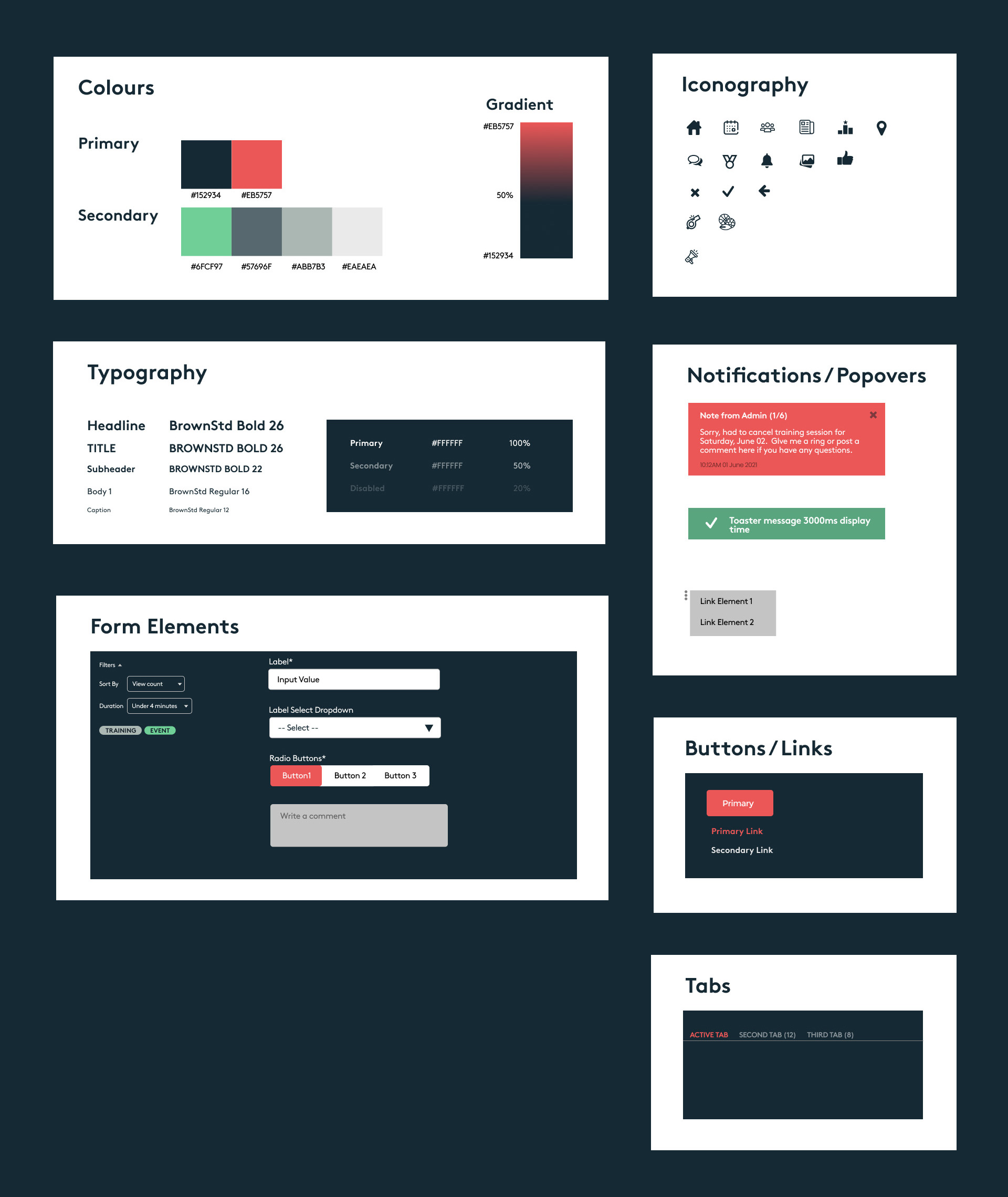
Result
The application design provided a balance between business and user requirements. Based on the discovery workshop gathered at the beginning of the project, the requirements were kept top of mind along with the three personas so that the features and design were all in line. The prototypes were fully annotated so could easily be handed off to developers for immediate coding.
The application consolidates a number of previoulsy used applications that users are currently using to manage, connect, and communicate with their sports club, team members, and fans. This one application can now be used rather than 3 or 4, allowing users to save time and optimise ease of use.
